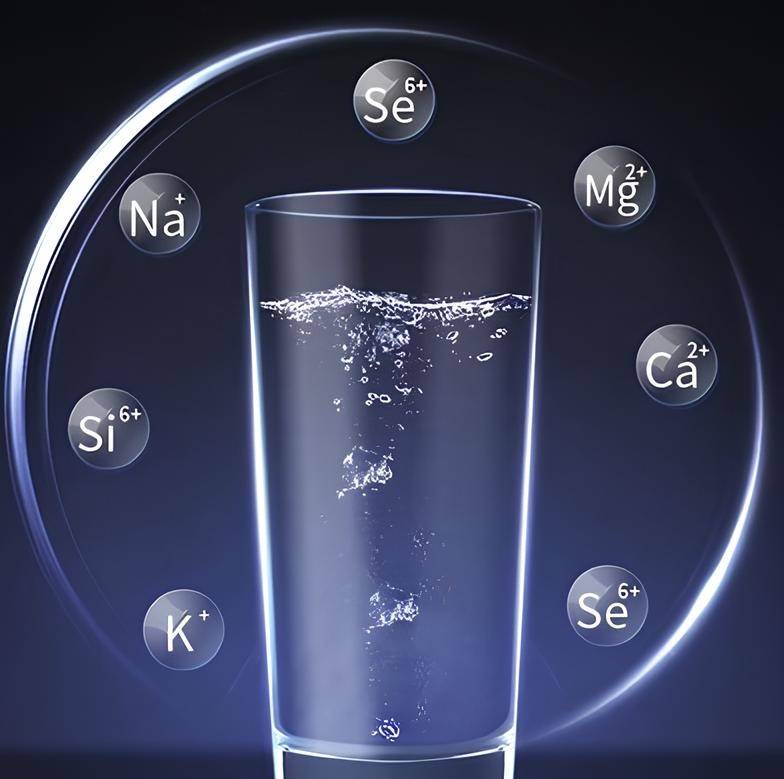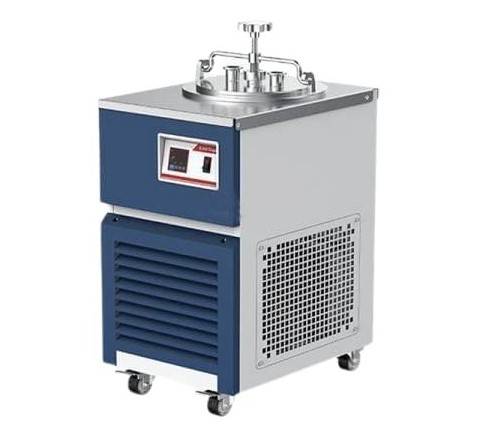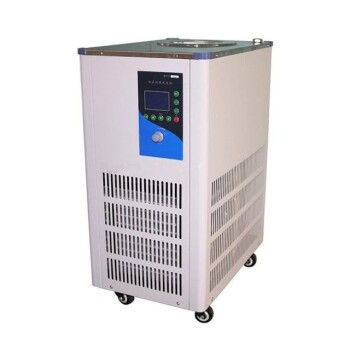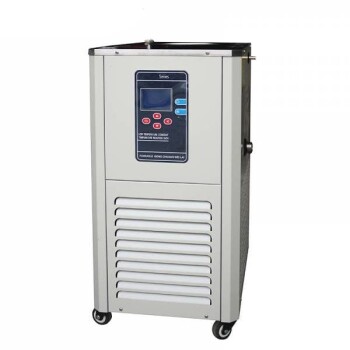Introduction: Importance of Proper Chilling
Proper chilling is crucial for many laboratory applications, including rotavap. Without proper cooling, the solvent vapor produced during the rotavap process may condense in the wrong place and affect the quality of the final product. Tap water chilling is a common method for cooling, but it has its limitations, such as inconsistent temperatures and impurities that can affect the process. Using a chiller can overcome these limitations and ensure consistent, high-quality results. In this blog post, we will discuss why tap water chilling is not enough for your rotavap and the benefits of using a chiller.
Table of Contents
The Limitations of Tap Water Chilling
When it comes to cooling the condenser of a rotavap, tap water chilling may seem like a convenient and cost-effective solution. However, it has significant limitations that can affect the accuracy and reliability of your results. Here are some of the main limitations:
Inconsistent Water Temperatures
Tap water temperatures can vary depending on the time of day and season, which can affect the consistency of your results. The cooling capacity of tap water is also dependent on its temperature. Therefore, if the temperature of the tap water fluctuates, your cooling capacity will also fluctuate, which can have a negative impact on the accuracy of your experiments.
Mineral Build-up
The water supply may contain minerals or impurities that can accumulate in the condenser over time, leading to a decrease in efficiency and potential damage to the equipment. The accumulation of minerals can also affect the rate of heat transfer, making it more difficult to achieve the desired temperature.

Inability to Achieve Low Temperatures
Tap water may not be able to achieve the low temperatures required for certain experiments, which can limit the types of solvents that can be used and the accuracy of your results. The lower the temperature, the more efficient the cooling, and tap water may not be able to reach the low temperatures required for some experiments.
Conclusion
In conclusion, tap water chilling may seem like a convenient and cost-effective solution for cooling the condenser of a rotavap. However, it has significant limitations that can affect the accuracy and reliability of your results. To ensure precision and consistency in your experiments, it may be worth investing in a recirculating chiller or other more advanced cooling system.
Overcoming the Limitations with Chillers
Rotary evaporators, commonly known as rotavaps, are crucial laboratory equipments. They require consistent temperature control to produce accurate results. While tap water can be used to regulate the temperature of rotavaps, it is not always sufficient, leading to inconsistent results. Tap water temperature can fluctuate throughout the day, which can affect the accuracy of the results. Additionally, tap water may not be able to achieve low enough temperatures for certain processes.
The Solution: Chillers
The solution to the limitations of tap water chilling is the use of chillers. Chillers provide a reliable and consistent source of temperature control for rotavaps. They can achieve lower temperatures than tap water, which is necessary for some applications. Chillers also offer precise temperature control and can maintain a constant temperature throughout the process.

The Benefits of Using Chillers
Investing in a chiller may seem like an added expense, but it can save time and money in the long run by improving the accuracy and reliability of your results. Here are some benefits of using chillers for rotavaps:
- Reliable and consistent temperature control
- Achieve lower temperatures than tap water
- Precise temperature control
- Maintains a constant temperature throughout the process
- Saves time and money by improving the accuracy and reliability of your results
The Drawbacks of Not Using Chillers
While tap water can work in some cases, it is not always enough for consistent temperature control in rotavaps. This can lead to the following drawbacks:
- Inconsistent and inaccurate results
- Wasted time and money due to inaccurate results
- Inability to achieve certain low temperatures
- Lack of precise temperature control
Choosing the Right Chiller
When selecting a chiller for your rotavap, it is important to consider the following factors:
- Vapor temperature
- Desired evaporation rate
- Condenser temperature
The lower the desired condenser temperature, the more cooling capacity you'll need from your recirculating chiller. It is also important to ensure you have sufficient cooling capacity for each solvent and process if you're using different solvents or have different condenser temperatures, vapor temperatures, or desired evaporation rates.
Conclusion
In conclusion, using tap water chilling for rotavaps can lead to inconsistent results due to fluctuating temperatures and the inability to achieve low enough temperatures for certain processes. Chillers offer a reliable and consistent source of temperature control for rotavaps and can improve the accuracy and reliability of your results. When selecting a chiller, it is important to consider the vapor temperature, desired evaporation rate, and condenser temperature to ensure sufficient cooling capacity.
Factors to Consider When Choosing a Chiller
When using a rotavap, it is important to have a chiller to cool the condenser. While tap water chilling may seem like a convenient and cost-effective option, it is not always sufficient for most laboratory applications. Several factors need to be considered when choosing a chiller.
Temperature Range and Compatibility
Firstly, the temperature range of the chiller should be compatible with the solvent being used. Different solvents have different boiling points, and the chiller should be able to maintain a temperature below the boiling point of the solvent.
Cooling Capacity
Secondly, the cooling capacity of the chiller should be adequate for the size of the rotavap being used. A chiller with insufficient cooling capacity can lead to longer processing times and lower yields.
Flow Rate and Pressure
Thirdly, the chiller should have an appropriate flow rate and pressure to ensure efficient cooling.
Safety Features
Additionally, the chiller should have safety features such as automatic shut-off and alarms to prevent overheating and damage to the equipment.
Other Considerations
Finally, factors such as cost, maintenance requirements, and compatibility with other lab equipment should also be considered when choosing a chiller.
Choosing the right chiller is crucial for the efficient and safe operation of a rotavap. By considering these factors, you can ensure that you choose a chiller that is compatible with your solvent, has adequate cooling capacity, has an appropriate flow rate and pressure, and has safety features to prevent overheating and damage to the equipment.
Proper Maintenance of Chiller and Rotavap

Regular Cleaning
Regular cleaning is necessary to maintain the optimal performance and longevity of your chiller and rotavap. Proper cleaning involves taking apart the equipment, washing the parts separately, and allowing them to dry before reassembling. For the condenser, you may need to soak it in an agent such as nitric acid or hydrochloric acid for a few hours before rinsing. Remember to use proper protocol including wearing appropriate personal protective equipment when working with these materials.
Checking for Leaks and Damage
Checking for leaks and damage is crucial to ensure that your chiller and rotavap are functioning correctly. Regularly inspect all joints, tubing, seals, and glassware for any signs of wear and tear. Damaged glassware is prone to breaking easily when you pull vacuum, so it's essential to check all your glassware before use.
Replacing Worn Parts
Replacing worn parts is necessary to ensure that your chiller and rotavap are functioning optimally. It's important to replace parts such as gaskets, O-rings, and seals regularly to prevent leaks and ensure that the equipment is functioning correctly.
Proper Storage
Proper storage is crucial to prolong the lifespan of your chiller and rotavap. When not in use, store your equipment in a clean, dry, and secure location. Cover the equipment to protect it from dust and other contaminants that can affect its performance.
Regular Maintenance Schedule
Create a regular maintenance schedule to ensure that your chiller and rotavap are always functioning optimally. Schedule regular cleaning, checking for leaks and damage, and replacing worn parts. Keep a log of all maintenance and repairs to help you keep track of when the equipment needs servicing.
By following these proper maintenance practices, you can ensure that your chiller and rotavap are performing optimally. Proper maintenance will not only give you accurate and reliable results, but it will also prolong the lifespan of your equipment, saving you money in the long run.
Conclusion: Advantages of Using a Chiller
Investing in a chiller for your laboratory equipment offers a range of advantages. With a chiller, you can achieve precise temperature control, which is critical for accurate and consistent results in your experiments. Chillers also allow you to maintain a constant temperature, which can increase the efficiency of your processes and reduce the risk of errors. In addition, chillers provide a more reliable and consistent cooling source than tap water, which can vary in temperature, mineral content, and other factors. With proper maintenance, a chiller can provide many years of reliable service and improve the accuracy and consistency of your laboratory results.
Related Products
- Laboratory Vertical Water Circulating Vacuum Pump for Lab Use
- Laboratory Benchtop Water Circulating Vacuum Pump for Lab Use
- Vacuum Cold Trap Chiller Indirect Cold Trap Chiller
- Vacuum Cold Trap Direct Cold Trap Chiller
- 30L Chiller Water Bath Cooling Circulator Low Temperature Constant Temperature Reaction Bath
Related Articles
- The Importance of Water Distillation in the Laboratory: Ensuring Purity and Quality for Accurate Results
- Cold Isostatic Pressing: Techniques and Applications
- Installation of Tube Furnace Fitting Tee
- How to Choose Laboratory Vacuum Pumps for Maximum Efficiency and Cost Savings
- Choosing the Right Rotary Vacuum Evaporator for Your Lab
















